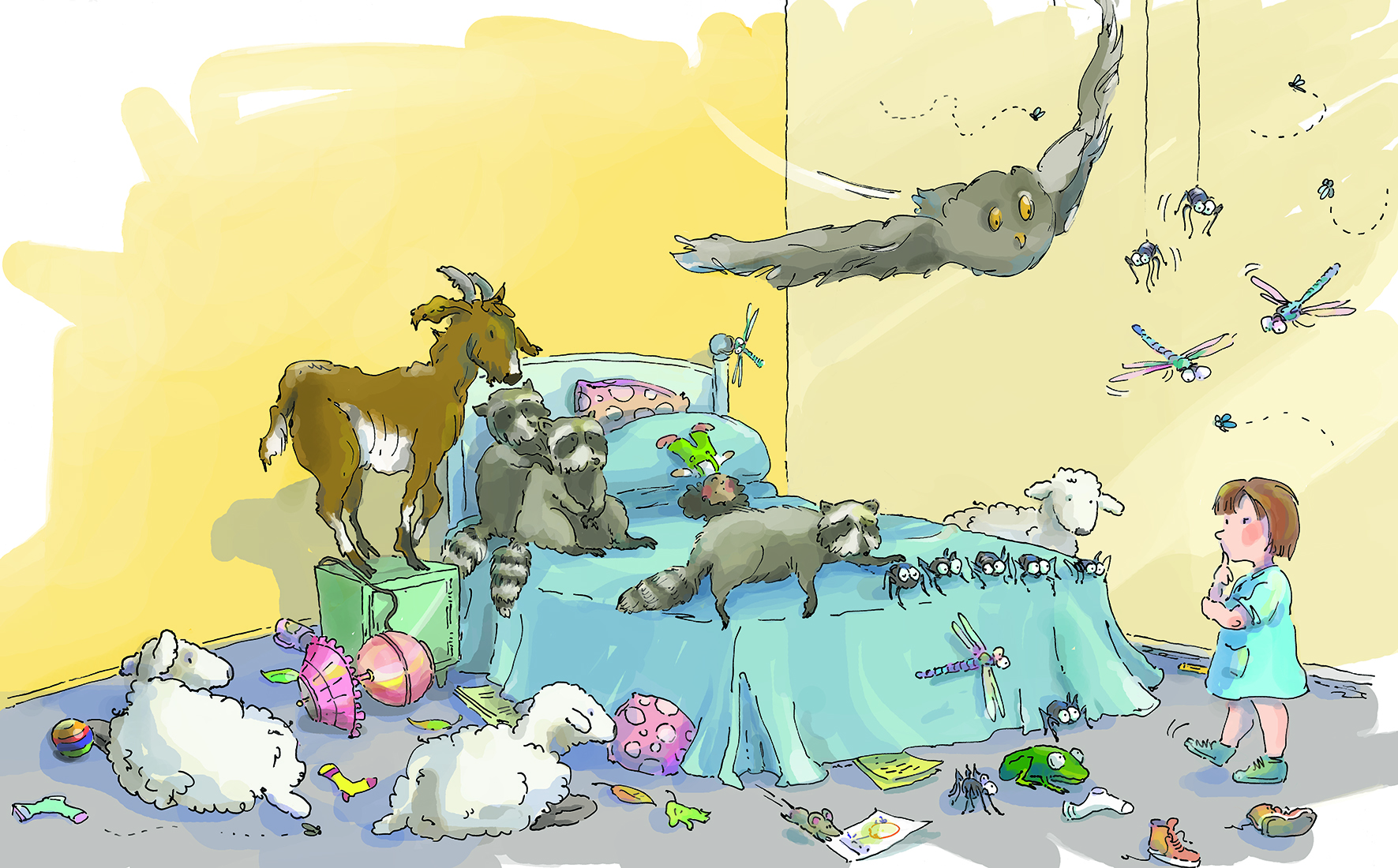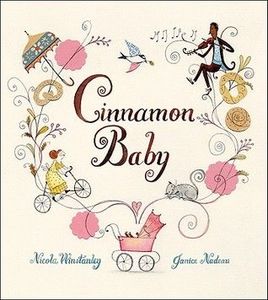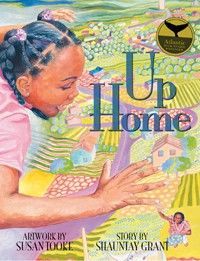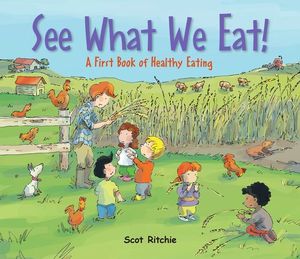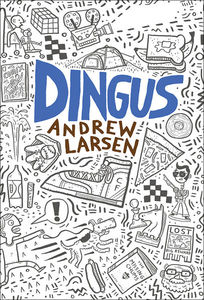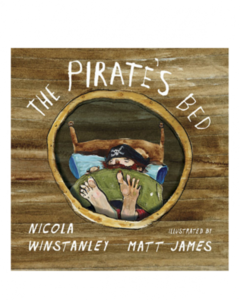Talking to Picture Book Creators - Part Two
By Susan Hughes
Welcome back! I hope you enjoy part 2 of my Q and A with the creators of four super picture books—Nicola Winstanley, author of A Bedtime Yarn, Shauntay Grant, author of The Walking Bathroom, Scot Ritchie, author and illustrator of Federica, and The Man Who Loved Libraries: The Story of Andrew Carnegie by Andrew Larsen.
Susan Hughes:
What do you like best about your latest book? What do you like least about it?
Nicola Winstanley:
Well, obviously, I’m thrilled to have been paired with such a lovely illustrator. I think her retro images are just gorgeous and right up my alley because I’m a big fan of weird, 60s picture books. I like the feeling it gives me still, too, when I read it—it even makes me a little weepy at the end.
What do I like least about it? Well, I’ve noticed two text errors that now drive me nuts because I never noticed them the hundred times I read it outloud before! (One is a word repetition, and one is a change we missed when we turned my original little boy into a cute little bear. If your readers can find these two annoying errors, I’ll send them a signed copy of my book!)
Shauntay Grant:
I love that my mom’s crazy costume idea from back-in-the-day inspired The Walking Bathroom. I often look to my childhood when writing stories for children. Sometimes I stay true to the memory, but often – as in this case – I’ll use the memory as a springboard for a new story idea.
Being a seasonal (i.e. Halloween) story puts limitations on sharing the work publicly, but that’s fine. It just makes this book extra special for October.
Scot Ritchie:
The best part about Federica was getting copies of the book and delivering them to my friend and her daughter in Berlin. I’m sure Federica thinks every four year old girl has a book based on them. But it’s also one of my first purely fiction books so I’m proud of that.
As for what I like least I’m stumped. I know I’m not playing the game but I really like everything about this book. I’m a Virgo and you will never hear me say that.
Andrew Larsen:
I have two new books and they’re like a couple of newborns. I love everything about them. I particularly like the way they look. I have been blessed with wonderful illustrators to bring my words to life. There is nothing about the books I don’t like. At least, not yet.
Your CanLit News
Subscribe to Open Book’s newsletter to get local book events, literary content, writing tips, and more in your inbox
I love the simplicity of Goodnight Hockey, Fans and I love the performative aspect of the text. The Man Who Loved Libraries: The Story of Andrew Carnegie is a change for me. It’s a picture book biography. It’s exciting to share a real life story with young readers and to invite them connect it with their own lives.
Susan:
If you could do one thing better or more easily as a writer, what would it be?
Nicola:
Come up with ideas! I get so stuck—but I think that is related to something else I would like to do better, and that’s believe in myself more and have greater confidence. Most writers I know are constantly on the knife edge of despair and elation. It’s quite exhausting.
Shauntay:
Write faster! I take a long time with first drafts. I labour over each word. And think a lot about voice and cadence. Don’t get me wrong – it’s joyful work! Just slow-going sometimes.
Scot:
Have the confidence I have as an illustrator. But I’ve been illustrating for longer so that makes sense. And I would like to get over the age old problem of sitting down and writing - taking the risk of putting finger to keyboard and realizing it’s ok, in fact natural, to not create magic every single time.
Andrew:
As a picture book writer, I wish I could tell my stories with fewer words. As a novelist, I wish I could weave more complex and layered plots.
Susan:
What were your biggest challenges to getting published for the first time? As you continue to write what do you find are the greatest challenges now?
Nicola:
The biggest challenge was having patience. My first book, Cinnamon Baby, was rejected by various places and I gave up on it. Then, about two years later, I saw Tara Walker, who I had worked with at Kids Can, at a wedding, and she said, “Remember that book we rejected? Can you send it again? It’s a better time now.” I realized that there are so many deciding factors for a publisher, most of which are out of your control. All you can do is the best you can do and hope the stars align.
Patience is still my biggest challenge. Publishing a picture book is a very long, slow process and it can be incredibly anxiety-inducing because months can go by with little to no feedback or conversation. My current book was with my editor for over a year before she was able to give me a straight yes. And it had already gone through the wringer for various reasons before that. I wrote it when my son was 3. He’s now 12 and a half!
Shauntay:
I didn’t really have any challenges the first time. I was reciting a poem I’d written for my family and community at a writers’ event in Halifax, and it was heard by the senior editor at Nimbus Publishing who later approached me about making it a book for kids. That’s really how I started writing for children.
I think my greatest challenge now is finding time to write especially during the teaching semester when I’m mostly focused on academic work and reviewing my students’ writing.
Scot:
Starting out I was an illustrator so I was brought in after the manuscript had been settled. As soon as I started writing I saw a whole different world. You have to build and set the stage entirely on speculation in the hopes of finding a publisher. That’s a lot of keeping something aloft based on your optimism that it will go somewhere.
Working on my series ‘Exploring Our Community’ with Kids Can Press is wonderful because there’s some reliability – or, relatively speaking, for the freelance world.
I always have 5 or 6 ideas underway in various folders, and I find the more I write the more confident I become about approaching a new subject.
Andrew:
Starting out, my biggest challenge was finding publishers who were willing to accept unsolicited manuscripts from unpublished authors.
As I continue to submit for publication, I find it a challenge to find new ways of telling stories. Picture books are an evolving art form and I don’t want to get stuck in a rut.
Susan:
What are the top tips you'd offer to other picture book writers wanting to take their writing/stories to the next level?
Nicola:
There are structural and formal things that anyone wanting to write picture books should be aware of—page count, word count, etc.—and this information is available all over the net, and really in every 32-page picture book you pick up.
But, apart from that, my only real tip is do what you do—find your own voice. Don’t try to be Dr. Seuss (for goodness sake!) or anybody else. Tell a story you want to tell in the way you want to tell it. Then, don’t rush it. Let it breathe and develop. Read it out loud over and over and listen to what it’s trying to tell you. Let other people read it and listen to what they have to say too—not everything will be useful, but don’t reject it all. Have some readers you really trust to help you see the woods and not just the trees when you’re way too close to your story.
Shauntay:
1. Write about what you know, but also write about what you want to know.
2. Get a second (and third and fourth…) opinion before submitting to a publisher.
3. Trust your voice.
Scot:
1. Write in your own voice. This is cliche but for a reason. If you can mimic a style or subject matter it won’t be enjoyable for you in the long run.
2. Go make some tea. This field is insanely competitive. Everybody thinks they can write a kid’s book so publishers are inundated. You’re going to wait awhile.
3. Always have something on the go. Once you’ve sent your story to a publisher get to work on another one, even better, start yesterday.
Even if you’ve written the best book ever, if the publisher has just put out a book out on that topic they’re likely going to say no thanks.
4. Be aware what publishers want in terms of topic, tone and style. Look at other books out there.
Andrew:
These are some of the things I tell myself: Read other picture books to see how other writers tell their stories. Read books about writing (ie. Stephen King On Writing, Anne Lamott Bird by Bird) to see how other writers work. Venture beyond your comfort zone and the safety of old habits. Keep your work fresh. And finally, stop thinking and get writing!
Susan:
Please share with us a favorite line or two from any one of your own stories.
Nicola:
In my latest book, The Bedtime Yarn, I most like the ending because I like the idea that parents and children create new worlds together: “That night Frankie kissed his mother, snuggled under his blanket and fell asleep, his paws empty of yarn, and his head full of all the wonderful dreams he and his mother had knitted up together.”
Shauntay:
Here are some lines from Apples and Butterflies (Nimbus, 2012):
i want to go where the moon is orange like the sun
and the stars go on forever
where marshmallows roast golden brown
and books come alive
late at night, over crackling campfires
Scot:
I’ve attached a visual I like from Federica and here are some lines of text:
Federica led the way to her bedroom. The dragonflies zoomed ahead as the spiders walked upthe stairs on their long thin legs.She closed her bedroom door and ran to the park.
Andrew:
I love the passage from Goodnight Hockey Fans, where the main character discovers the broadcast of a hockey game on his transistor radio. It is a joy to read aloud:
He takes out his dad’s old radio from under his pillow.
With a gentle click, he turns it on and moves the dial…slowly, slowly.
Station to station.
Past the music.
Past the talking.
Past the hush.
And then he hears it…
That's it for Susan's interview with picture book creators. Thanks for reading, all.
Nicola Winstanley is a picture-book author who also writes fiction, poetry and comix for adults. She lives in Hamilton, Ontario. Her website is in progress!
Shauntay Grant is the author of several children’s books and she teaches creative writing at Dalhousie University in Halifax. She is Halifax’s third Poet Laureate (2009–11). Her website is shauntaygrant.com.
Scot Ritchie is an award winning illustrator and author who lives in Vancouver, British Columbia. He loves to draw and is in the process of learning to love to write. His website is www.scotritchie.com.
Andrew Larsen lives in a neighbourhood in Toronto, Ontario, that has tall trees, old houses and plenty of stories. Sometimes Andrew goes looking for stories and sometimes stories come looking for him. His website is www.andrewlarsen.ca.
The views expressed by Open Book columnists are those held by the authors and do not necessarily reflect the views of Open Book.
Susan Hughes is an award-winning author of children's books — both fiction and non-fiction — including The Island Horse, Off to Class, Case Closed?, No Girls Allowed and Earth to Audrey. She is also an editor, journalist and manuscript evaluator. Susan lives in Toronto. Visit her website, www.susanhughes.ca.
